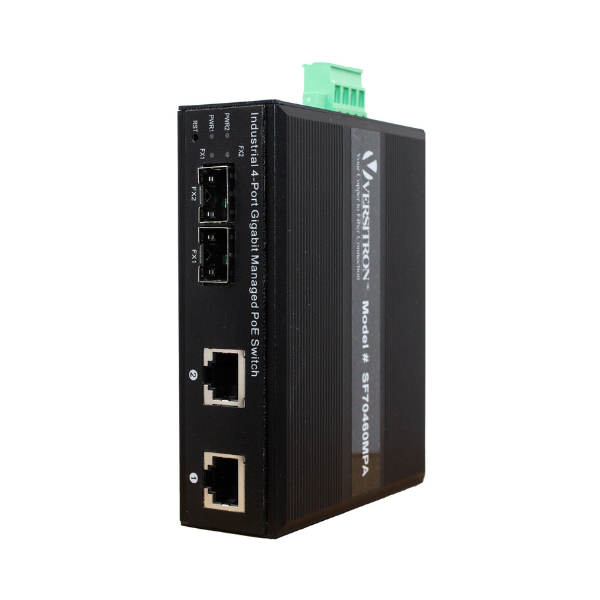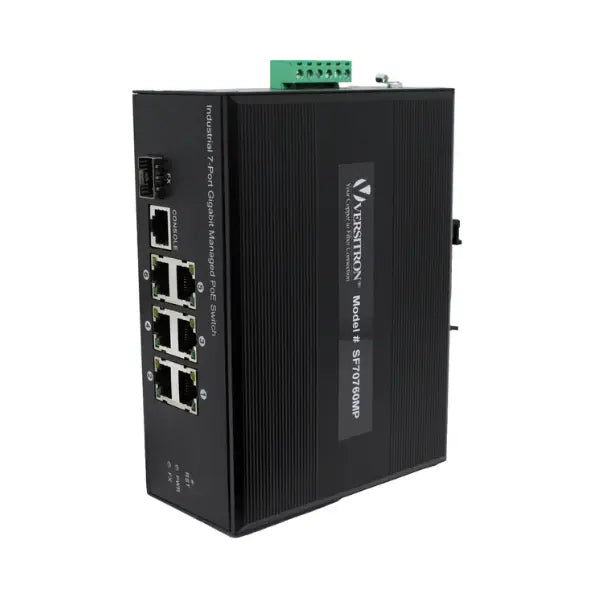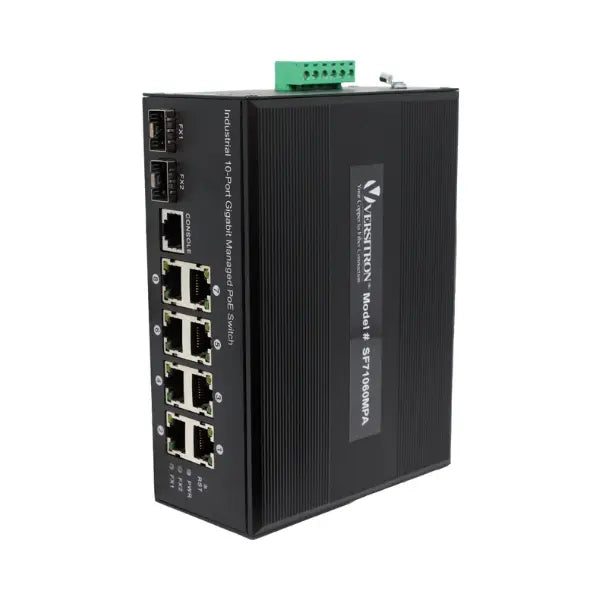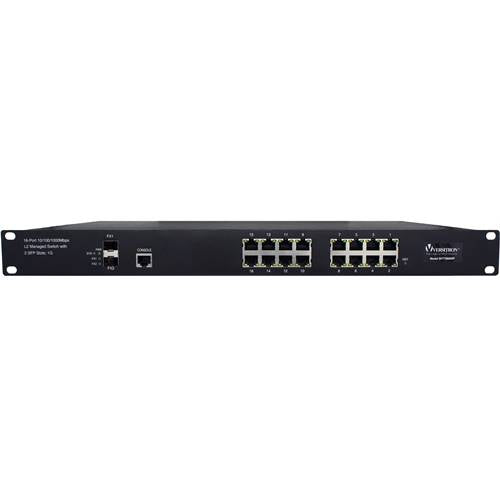In today’s world, video surveillance systems have emerged as an essential requirement for both residential and commercial spaces. These systems have long served as a vital component in safeguarding critical applications. However, many businesses, particularly small-scale enterprises, have often underestimated the significance of implementing a reliable surveillance solution.
However, it is essential in the current times to ensure the overall safety of employees, the confidentiality of data, and safeguarding other such important aspects of a business.
Today, WiFi and PoE camera systems have emerged popular security solutions. Both the security systems are gaining immense momentum owing to their beneficial features. No matter what you choose WiFi or Power over Ethernet cameras, it’s quite difficult to ignore the importance of these security devices in every facet of our daily lives.
This post explores WiFi and PoE security camera systems in detail.

What is PoE Camera?
A power over Ethernet (PoE) camera is much like a traditional security camera. As the name suggests, it is the wired system that requires cables for power, video transmission, and internet connection. PoE technology is used to transmit both data as well as power through a single cable. IP cameras equipped with PoE technology can send video records to the network while receiving power from the same PoE switch. This makes the installation process more flexible and easier than the latter. PoE cameras are known for their reliability and consistency. Unlike WiFi cameras, these systems do not face issues such as interference and signal jamming.
Benefits of PoE Security Camera
- Greater Flexibility & More Options for Camera Placement: PoE cameras offer greater flexibility in placement as they receive power through Ethernet cables, eliminating the need for proximity to electrical outlets. This allows for more diverse installation locations and easier relocation by simply moving the Ethernet cable.
- Reduced Maintenance & Simpler Management: PoE camera systems require less maintenance and are easier to manage due to fewer cables and hardware components. They can be monitored and configured via Simple Network Management Protocol (SNMP), especially beneficial for cloud-based systems that do not require DVRs.
- Lower Installation Cost: PoE systems are more cost-effective to install because they use a single cable for power and data, eliminating the need for separate power cables and certified electricians. This reduces installation costs and simplifies the process.
- Better Scalability: PoE cameras are quicker and easier to scale compared to traditional systems. Adding cameras involves simply adding network connections without complex wiring, facilitating faster and more straightforward system expansion.
- Better Power Reliability: PoE provides a centralized and cohesive power source, reducing reliance on multiple adapters. A PoE switch can be connected to an uninterruptible power supply (UPS), ensuring cameras operate during power outages and enhancing system reliability.
- Better Network Reliability: PoE cameras offer a more reliable network connection than WiFi cameras due to their hardwired Ethernet connections. This ensures consistent and dependable surveillance, critical for security purposes.
- Increased System Safety: PoE systems enhance safety by delivering power efficiently and safely, with advanced products featuring protection against short-circuiting and excessive current. This reduces electrical hazards and ensures secure operation of the devices.
Applications of PoE Security Camera System
- Surveillance and Security: PoE cameras are widely used for surveillance and security purposes in various settings such as homes, offices, retail stores, banks, airports, and public spaces. They provide high-quality video monitoring, recording, and remote access capabilities.
- Building and Facility Management: Power over Ethernet cameras are utilized in building and facility management for monitoring entrances, parking areas, common areas, and critical infrastructure. They enhance security, safety, and access control measures.
- Healthcare Facilities: PoE camera systems are deployed in hospitals, clinics, and healthcare facilities to monitor patient areas, waiting rooms, entryways, and sensitive areas. They contribute to patient safety, staff security, and asset protection.
- Education Institutions: PoE cameras are used in schools, colleges, and universities for campus security, monitoring classrooms, hallways, parking lots, and common areas. They help ensure the safety of students, staff, and campus assets.
- Industrial and Manufacturing Facilities: PoE cctv cameras play a crucial role in industrial and manufacturing environments for monitoring production lines, equipment, and critical areas. They enhance operational safety, security, and quality control measures.
- Transportation and Logistics: PoE cameras are employed in transportation systems, including airports, train stations, bus terminals, and logistics centers, for monitoring passenger areas, cargo handling, and security checkpoints. They assist in ensuring public safety and efficient operations.
- Retail and Commercial Spaces: PoE cameras are used in retail stores, shopping malls, and commercial buildings to deter theft, monitor inventory, enhance customer safety, and assist in loss prevention efforts.
- Smart City Initiatives: PoE cctv camera systems are integrated into smart city initiatives for video surveillance, traffic monitoring, public safety, and urban planning. They contribute to creating safer and more efficient urban environments.
PoE Camera Systems: Future Trends and Innovations
The future of PoE camera systems is filled with promising possibilities. Ongoing advancements in camera technology, including higher resolutions and improved image processing, will further enhance video quality and detail. Integration with smart home devices and the Internet of Things (IoT) will unlock new opportunities for automation and intelligent control of security systems.
Cloud-based storage and AI-powered analytics will enable efficient data management and provide actionable insights for improved decision-making. Sustainability and energy efficiency initiatives will drive the development of PoE systems that minimize power consumption, making them environmentally friendly and cost-effective. As these innovations continue to evolve, PoE security camera systems will play an increasingly vital role in ensuring safety, security, and enhanced surveillance capabilities in various applications and industries.
What is WiFi Camera?
As an alternative to PoE cameras, a WiFi camera system connects cameras to a wireless router without any hardwired connection. Thus, it is called a WiFi camera system. However, they still require wired power. They transmit security footage from the camera to the recorder, further, which can be accessed within a network or remotely through app or software. This means the user can access the footage either through cloud storage or built-in devices. Through software, the user can not only view the cameras’ video feed but also have access to several features of cameras settings. Additionally, the user can access sound or any movement that takes places within its radius.
Features of Wi-Fi cameras
Wi-Fi cameras offer several features that make them popular for surveillance and monitoring purposes. Here are some key features of Wi-Fi cameras:
- Wireless Connectivity: Wi-Fi cameras connect to a wireless network, eliminating the need for Ethernet cables and allowing for flexible camera placement within the range of the Wi-Fi signal.
- Remote Access: Wi-Fi cameras enable remote access, allowing users to view live video feeds and recordings from anywhere using a smartphone, tablet, or computer. This feature provides convenience and peace of mind, especially when monitoring premises remotely.
- Easy Installation: Wi-Fi cameras are easy to install, as they require minimal wiring. Simply connect the camera to a power source and configure it to connect to the existing Wi-Fi network.
- Motion Detection and Alerts: Many Wi-Fi cameras are equipped with motion sensors that detect movement and send alerts to the user's device. This feature allows for real-time notifications, ensuring prompt action in case of suspicious activity.
- Two-Way Audio: Some Wi-Fi cameras have built-in microphones and speakers, enabling two-way audio communication. This feature allows users to listen and speak through the camera, facilitating remote interaction or monitoring.
- High Definition (HD) Video: Wi-Fi cameras often offer high-definition video quality, providing clear and detailed footage for enhanced surveillance and identification of objects or individuals.
- Night Vision: Many Wi-Fi cameras are equipped with infrared (IR) LEDs, enabling night vision capabilities. This allows for monitoring in low-light or complete darkness, providing visibility even in challenging lighting conditions.
- Cloud Storage and SD Card Support: Wi-Fi cameras often support cloud storage options, allowing for secure storage and access to video recordings. Additionally, some cameras offer SD card slots for local storage of footage.
- Mobile App Integration: Wi-Fi cameras typically have companion mobile apps that provide a user-friendly interface for controlling and accessing camera features. Users can view live streams, adjust camera settings, receive alerts, and manage recordings through the app.
- Compatibility with Smart Home Devices: Many Wi-Fi cameras integrate with smart home devices and voice assistants, enabling seamless integration and control within a broader smart home ecosystem.
WiFi vs PoE Camera System – How to Make an Appropriate Selection?
Both WiFi and PoE security cameras can offer basic monitoring functions, but they are rather distinct. Both the systems have their pros and strength, so it’s not simple to make a wise and quick decision. The following pointers will help you better understand their benefits in distinct applications.
- Installation: As discussed earlier, the Power over Ethernet camera transmits both power and data using a single cable. This means, there is no need for a secondary cable for power. This makes the setup process much easier and more flexible. Also, there is no need to install the camera close to the power source as the PoE switch directly provides the power source. On the other hand, WiFi cameras are connected to the WiFi network for footage transmitting. Thus, there is no need to run the cables from the recorder to the cameras, making the installation process easier. However, for Wi-Fi systems, you need an expert networking team for any technical issues and security reasons.
- Transmission Speed: Data transmission speed has improved with the aid of PoE technology. PoE may deliver up to 2.5 to 5Gbps data over distances of 100 meters by adopting Cat5 and Cat6 patch cables. WiFi cameras are nothing but WiFi jammers. For instance, if 4 IP cameras over the network transmit data continuously, then this will slow down the WiFi and put a strain on your internet.
- Coverage: The PoE cameras need to be located within 100 meters, which is ten times than the WiFi ones. This means the connection distance of Wi-Fi cameras needs to be within a 10-meter radius of the router signal, which is the biggest pitfall of a wireless connection.
- Security: There are fewer chances of network attacks in hardwired systems on the account of the automatic emails and auditory alerts. However, wireless networks are more prone to spoofing and hacking as the spoof and the destination device’s address, as well as data format, will achieve the goal.
- Power Management: Implementing PoE technology, the user can rely on the centralized or centrally-managed uninterrupted power supply (UPS) for backup power. On the other hand, Wi-Fi cameras utilize individual power management systems.
- Cost: PoE cameras are more expensive than WiFi cameras. To setup PoE cctv cameras, the user will require a decent network switch, PoE supported Ethernet cables, qualified PoE IP cameras, which automatically increases the installation costs. On the other hand, WiFi cameras require fewer tools and accessories, which saves money and known as a cost-saving option.
Are you looking for a reliable camera for your surveillance system? Ensure you source them from reliable suppliers who have their networking experts. No matter what you choose, VERSITRON is 24*7 available for help. Their wide range of inventory ensures the highest performance for most of the demanding applications.









